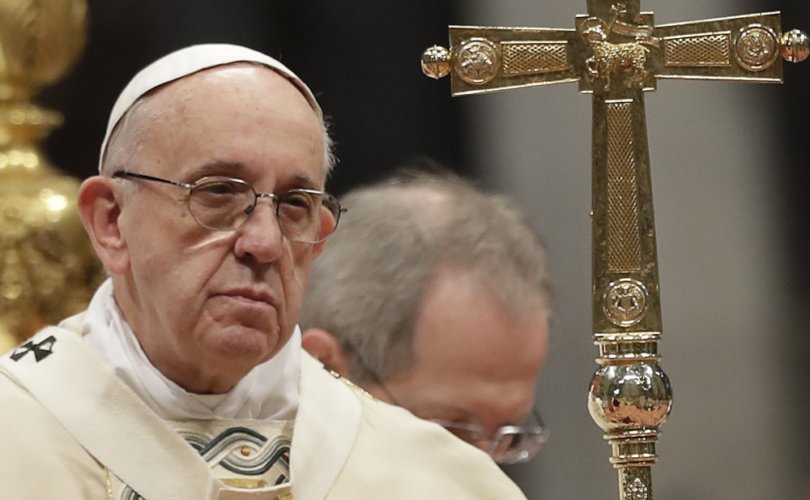LifeSiteNews has been permanently banned on YouTube. Click HERE to sign up to receive emails when we add to our video library.
2 June, 2021 (CatholicCulture.org) — As an editor, a writer, and a reader, I cherish clarity of expression. As a Catholic, I am appalled by the abuses of language — the pretense, the confusion, the obfuscation, and even the outright deceit—that I see in many recent pronouncements from our Church leadership.
Last week the Vatican announced that a meeting Synod of Bishops, which scheduled for October 2022, will be postponed for a year, to allow for broader discussions of the chosen topic: synodality. The Vatican has suggested a full program of consultations: in parishes, then at the level of dioceses, then episcopal conferences, and finally at the “continental” level, leading to the bishops’ session in Rome.
The topic of all these consultations, again, will be synodality. The quest for synodality is a key theme in the teaching of Pope Francis. But the truth is that no one has a very clear understanding what “synodality” means. And maybe that’s the point. Will a year of consultations clarify things, or will it simply allow for more general confusion?
Or — a more likely possibility, in my view—will that general confusion allow for a cadre of activists to seize control of the process, and turn “synodality” into a handy cover for their own preferred plans?
This week, in a similar development, the Vatican unveiled a a seven-year “action platform” to implement the teaching of the encyclical on the environment. Pope Francis explained the ambitious goal of this program, saying that “we need a new ecological approach, that can transform our way of dwelling in the world.”
So how does the Vatican propose to transform human life? The plan suggests that the first year of the effort should focus on “the three fundamental tasks of community building, resource sharing, and drawing up of concrete action plans.” Thus after calling for seven years of concrete action, the Vatican proposes to begin by making plans for concrete action. So this isn’t really an “action platform,” so much as a call for some action(s) which have not yet been identified. The Vatican’s plan, as described, is not for specific actions but for a lengthy and malleable process.
In both cases — the synod consultation and the environmental “action platform” — the Vatican calls for the recruitment of activists who will work with parishes, dioceses, and episcopal conferences to pursue the desired goals. So a fresh layer will be added to the ecclesiastical bureaucracy, with new operatives holding meetings, attending conferences, issuing statements, and promoting what they see as the top priorities for their Catholic communities.
The great conservative theorist Russell Kirk attended the “Call to Action” conference in Detroit in 1976, and saw how a cadre of such activists — whom he described as “the church mice” — could and did drive the agenda, producing a pastoral disaster from which the Church in America has not yet fully recovered. The bishops who should have controlled the meeting were unprepared; the activists were oh-so-very prepared, and ready to seize the day.
Is this the meaning of “synodality” — a process that would allow a determined, organized minority to dictate pastoral practice? Is this the way the Vatican under Pope Francis proposes to transform human activity, ushering in an environmentalist utopia? And if that is the immediate future of our Church, what will the cost be, in terms of the integrity of Catholic doctrine, the vigor of sacramental life, and the mission to make disciples of all nations?
Published with permission from CatholicCulture.org

